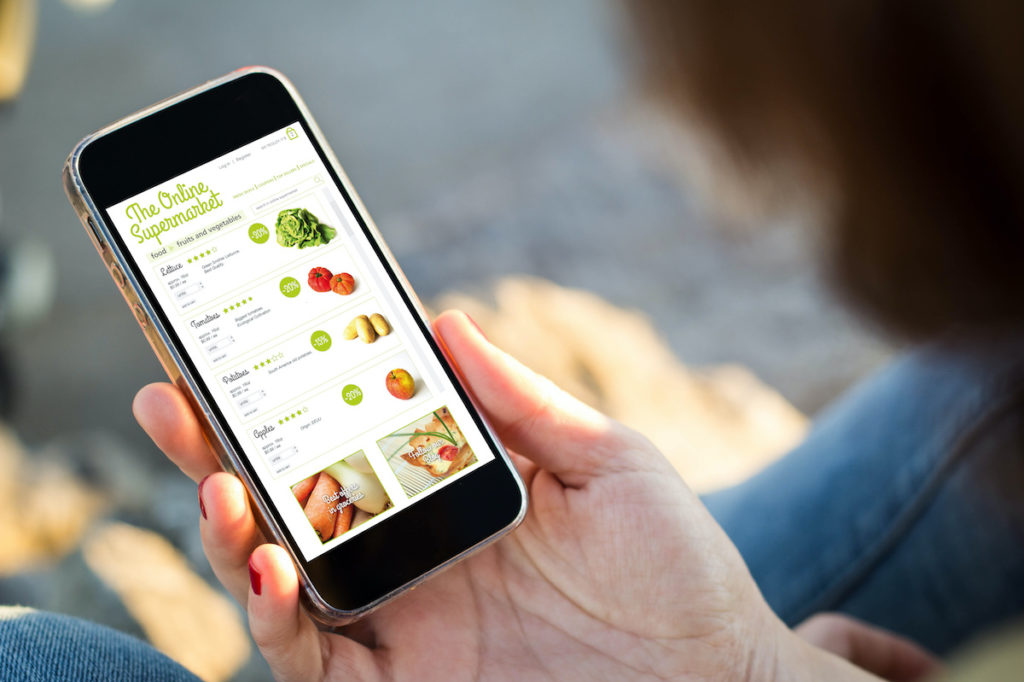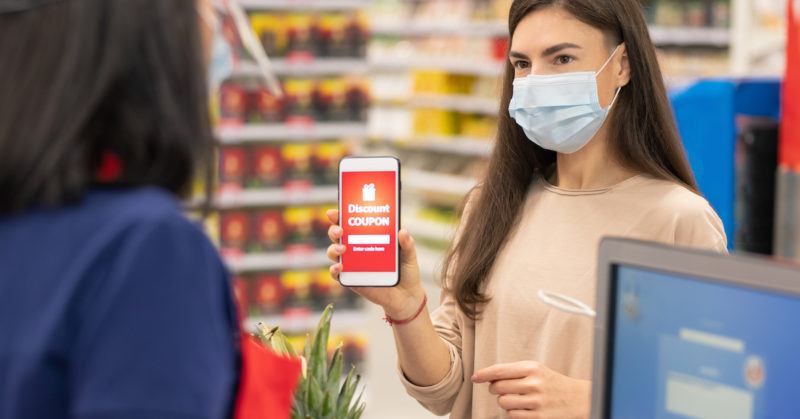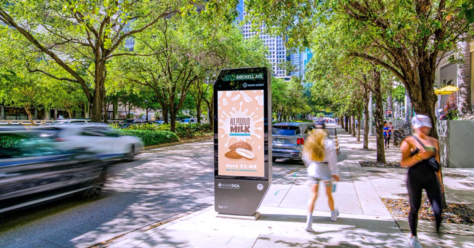The Three Whammies Grocery Retailers Could Face in 2021
and How to Counteract Them
Last year was a wild and historic time for grocery retailers. Consumers stocked up on products in an effort to follow shelter-in-place orders, ate more meals at home and began cooking as a hobby. In turn, grocery retailers reported massive growth, as much as 5 years of normal growth for some.
While COVID-19 fueled an unprecedented year of growth for grocery retailers, it also expedited eCommerce in grocery—leaving many grocery retailers falling behind their competition, facing gross margin rate challenges, trying to develop a new store labor model to fulfill click and collect orders and more.
The boom of 2020 will likely be followed by a triple whammy of obstacles in 2021.Therefore, there has never been a more important time for grocery retailers to tap into alternative profit streams from retail media and digital coupons.
Whammy 1: Correctly Estimating the Effect of the Pandemic
This time last year, the world was shutting down, countries were issuing stay-at-home orders and grocery stores were struggling to keep product on the shelves as shoppers tried to prepare for the unknown time ahead. Fast forward to this year and we now anticipate an increase in vaccination distribution providing consumers with more safety against COVID-19.
Although 2020 was a historic year for grocery retail due to quick-turn innovation and extraordinary sales increases driven by the pandemic, grocery retailers are now expected to hold on to those or numbers or even continue to grow!
Whenever there is a macro event, such as a natural disaster, it is very hard for grocery retailers to calculate the true effect of the incident. Determining the exact outcome of an unprecedented time period is an entirely new challenge that, unfortunately, can lead to consequences for a business (such as a miscalculated performance).
Whenever there is a macro event, such as a natural disaster, it is very hard for grocery retailers to calculate the true effect of the incident. Determining the exact outcome of an unprecedented time period is an entirely new challenge that, unfortunately, can lead to consequences for a business (such as a miscalculated performance).
As vaccinations increase, people may begin to rejoice, shift back to their old habits and potentially slip into a period of not wanting to eat at home. Or, perhaps they will still be cautious and stick to their new at-home lifestyle.
An inaccurate estimation of consumer behavior could easily result in negative sales numbers versus the business plan, which can be alarming for grocery retailers and result in our first “whammy.”


Whammy 2: Rising Proportion of eCommerce Sales and Increased Competition Lowers
Although our survey data in August of 2020 revealed that 9 out of 10 shoppers are still going on weekly trips to the grocery store, eCommerce has grown incredibly in the last year as shoppers stayed home to minimize their risk of contracting Coronavirus throughout the many phases of the pandemic.
In 2021, eCommerce is predicted to rise despite overall sales not matching the record high levels of last year. Therefore, eCommerce is expected to be an even larger portion of sales as overall sales decrease in comparison to 2020 (when consumers were stocking up for the unknown and limiting grocery visits) and eCommerce continues to experience growth.
With eCommerce, margins are usually slimmer due to the cost of picking and fulfillment. Combined with a decrease in overall sales, the continued rise in eCommerce sales could negatively impact overall margins—leading to whammy number two.
In addition, as grocery retailers compete to retain sales and market share, a natural rise in price competition will occur as a result. This is great for customers; however, the increased price competition will place further strain on retailer margins—especially if advertisers seek to protect the margin growth they experienced in 2020 as anticipated.
The increased price competition will place further strain on retailer margins—especially if advertisers seek to protect the margin growth they experienced in 2020 as anticipated
Last year, brands were able to capture demand without creating it—leading to significant margin increases for many advertisers. As competition heats up, retailers will potentially push for lower prices and brands may want to maintain their margins—which could lead to an interesting dynamic between retailers and their advertiser partners.
Whammy 3: Cutting Costs in a Competitive Landscape
The go-to strategy for a grocery retailer facing margin dilution has typically been to cut costs. Traditionally, the first areas of cost cutting focus are store labor and marketing.
This traditional strategy likely won’t work in the upcoming year with factors working against it. For example, the growth of eCommerce click and collect requires more store labor. This is compounded by the push to raise minimum wage to better compensate in-store workers amongst others. Also, as competition heats up, the need for retailer brand marketing and promotion pricing awareness also rises—mitigating the ability to cut marketing budgets. As a result, grocery retailers will have increased cost pressure in areas that are traditionally more flexible—which is our third whammy.


How Grocery Retailers Can Counteract the Three Whammies
In 2021, grocery retailers should be searching for new revenue streams and price-saving tactics to counteract the lower margins, increased price competition and increased cost of labor.
Quotient works to drive alternative profits through retail media by leveraging data and audience assets to deliver targeted and closed-loop measurable media to shoppers. Brands looking for new ways to connect with shoppers in light of the cookie-less future are now looking for first- and second-party data, which reveals a fuller picture of consumers to brands—all while fostering trust with shoppers. This information allows for success and creates a myriad of ways to connect with consumers at different touchpoints, both on and offsite.
Using trusted first- and second party data, we also provide value to both shoppers and retailers through enhanced coupon programs. Coupons work to drive shoppers to specific retailers, create awareness of products for brands and offers customers value beyond traditionally funded temporary price reductions. Through COVID-19 and beyond, coupon deals are especially important to shoppers.
Omnichannel strategies are a unifying piece for both advertisers and retailers during these unpredictable times, since it both piques brands’ interest and also delivers traffic to retailers. Retailers can tap into Quotient’s omnichannel capabilities to plug the revenue gaps and help generate profits that go straight to their bottom line.
Click the button below for more information on Quotient’s omnichannel advantage or contact us at communications@quotient.com.



